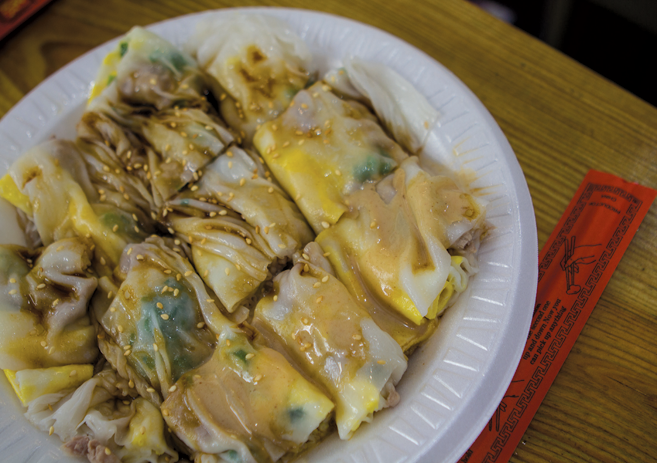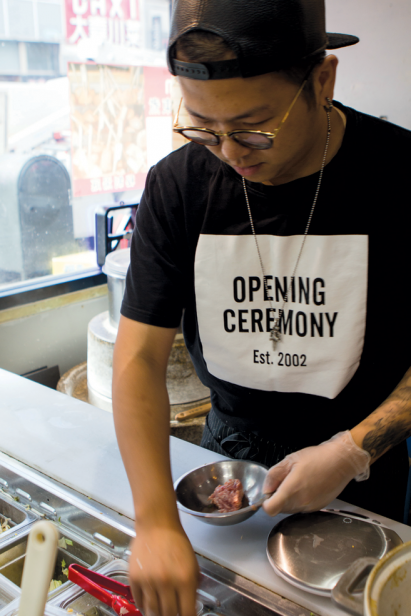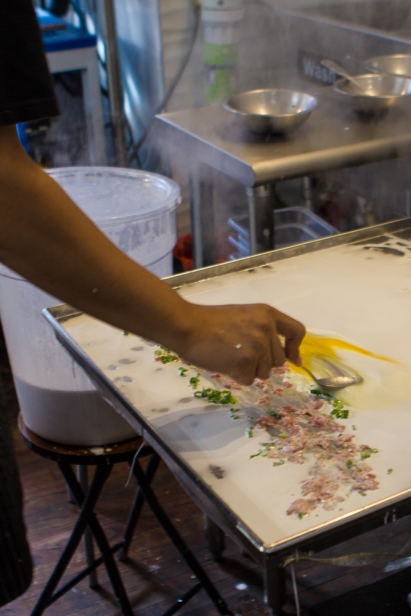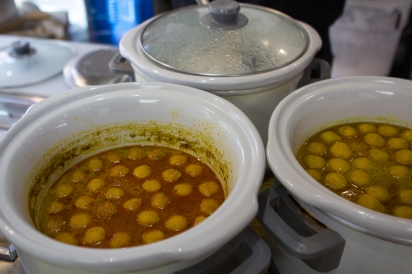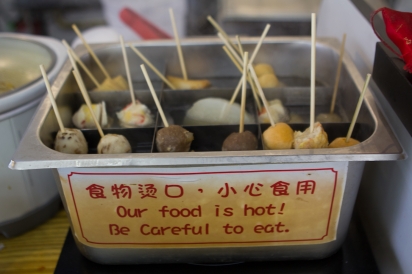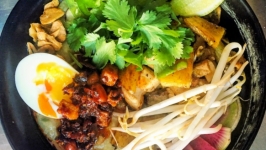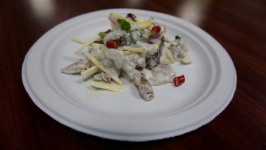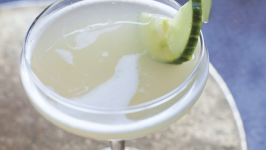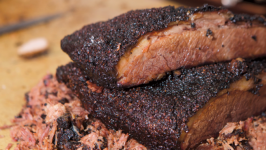These Rice Rolls Deserve a Cult Following
Steam billows from every crevice of the shiny metal box in the shop’s center. Joe Rong, the owner of Joe’s Steam Rice Roll, stands over it, patiently. He is waiting for the seemingly magical creation that is his steamed rice roll: tender and thin, rice paper filled with lightly seasoned ground pork and chives.
Moments later, he pulls the first sheet from the machine with his bare hands, and quickly rolls up the rice-water-turned-noodle into a crinkled roll. With a large blade he cuts it into two-inch pieces and slips it onto a plastic plate or to-go container.
Rong had never cooked before he began selling steamed rice rolls in his Flushing shop, and that was just two years ago. Unable to find one of his favorite foods amongst the hundreds of Chinese restaurants in New York, he journeyed back to China. Until recently, his family owned a restaurant in Taishan, just south of Hong Kong. So when Rong returned to his hometown, he turned to his uncle who had been running the restaurant.
“‘Just go to any restaurant you want, and you taste all of the rice rolls,’” Rong recounts his uncle telling him. “‘And when you decide which one’s better, I will ask them to teach you.’”
Every street in Taishan has at least one or two steamed rice roll spots. He dutifully tried them all until he found the best, and that’s where he asked for a job. After two months of learning their technique, he gathered up his new rice grinder and steamer and went back to Flushing. Learning to cook wasn’t easy for Rong. The hot pan burned his hands, and for the first few months they were red.
The technique itself? “It’s not complicated,” he says about making these rice rolls that no one else in New York City makes quite like him. Every morning he grinds fresh rice with water, in a large stone grinder that sits behind the counter. As each order comes in, he scoops the liquid onto a large baking sheet, and shakes it until it is spread out evenly. This liquid becomes the rice paper wrapper.
Customers choose their fillings, which he then whisks into the lower half of the pan. It’s hard to believe that these few ingredients will turn into the ample meal that they do.
“Back in China we have the plain one; it’s the most traditional, with some scallions,” he says, “Sometimes we put some pork. Really simple.” Traditional Cantonese food is uncomplicated, with few ingredients, steamed or boiled to create a fresh, light meal.
He slides the pan into the large metal box, and waits for steam. Within a minute or two, the once-liquid rice, whisked egg and spoonful of meat comes out of the machine as a thin layer to be rolled up. Traditionally, it is topped with soy sauce.
“When I first started this business, the old [Cantonese] people who have been here 40 or 50 years come here,” Rong said. It reminds them of home: “Some people, when they try the steam rice roll, they cry.”
When he started the business, his family was skeptical. His uncle asked why he would ever want to make rice rolls. His answer was simple: “Because in New York, no one has tasted it.”
His shop has been open for seven months, but the space has already doubled in size; Rong has his sights set on expanding to Manhattan in the next year. His intentions are healthy food and sharing a part of his home—pure and simple, like his dishes.


